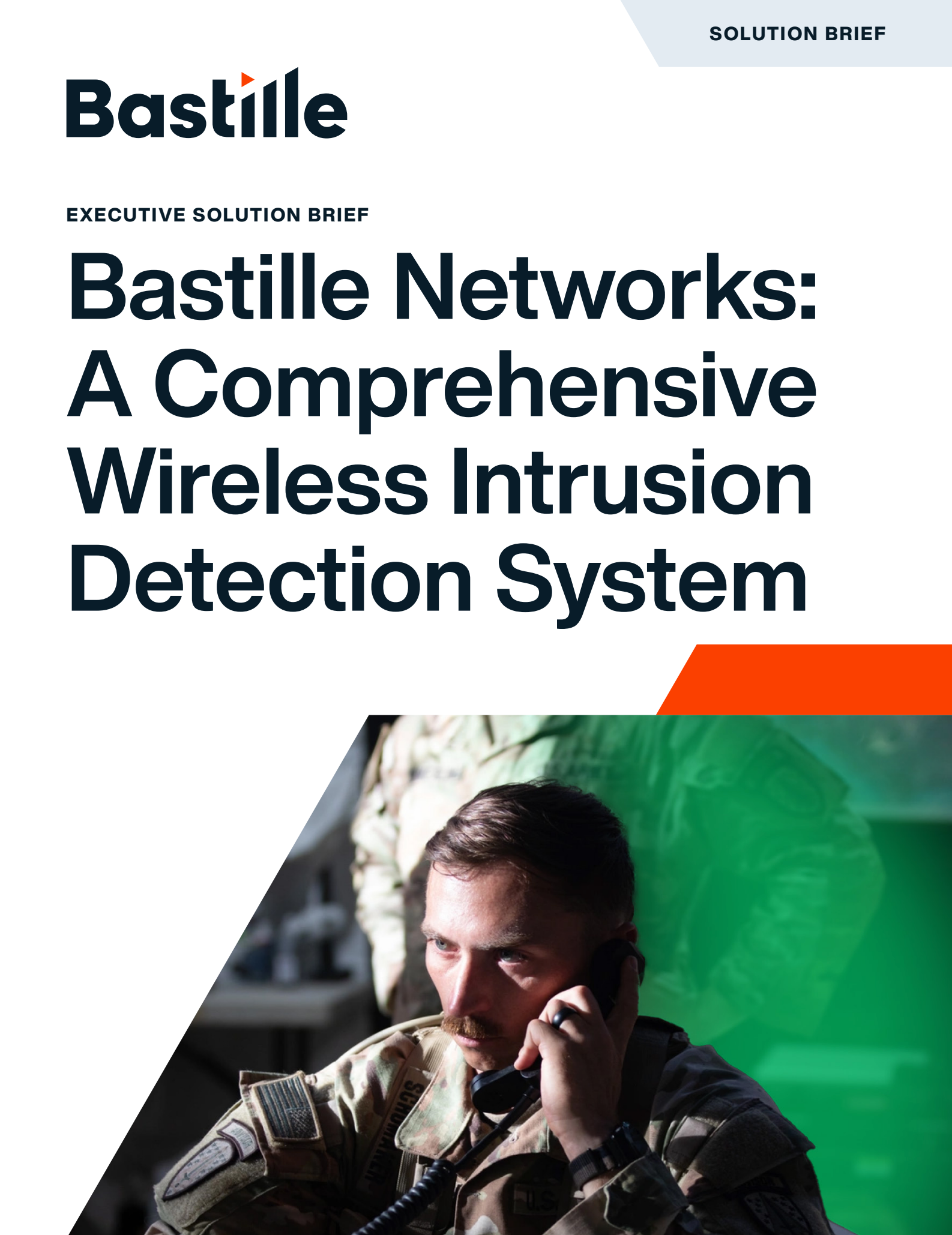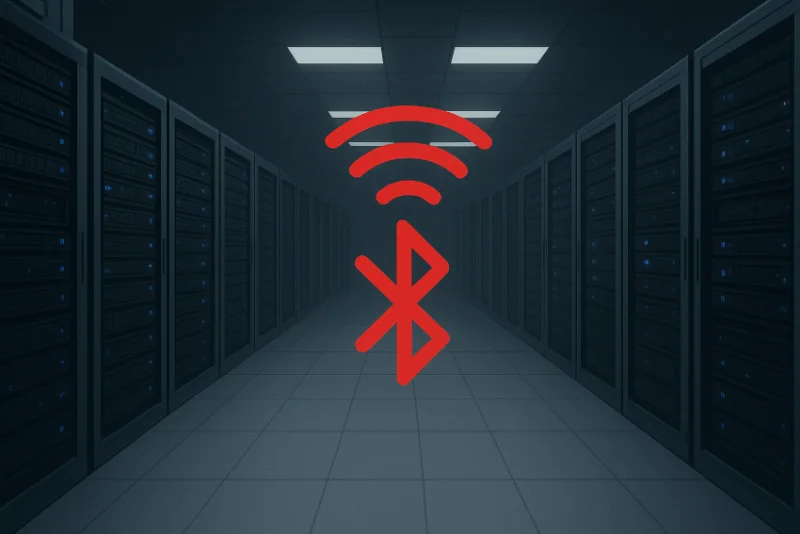
The growing adoption of Internet of Things (IoT) devices in government agencies and critical infrastructure has introduced significant security risks that cybercriminals aggressively exploit. IoT devices, including IP cameras, environmental sensors, industrial controllers, and smart meters, play a crucial role in public safety, utilities, and defense operations. However, they often lack robust security controls, making them prime targets for cyberattacks.
The 2025 SonicWall Cyber Threat Report reveals a 124% increase in IoT attacks, with IP cameras, smart building systems, and industrial IoT (IIoT) devices among the most frequently targeted. These attacks can result in service disruptions, data breaches, and operational failures that impact essential infrastructure.
As these threats escalate, Bastille Networks provides 100% passive RF monitoring with broad frequency coverage, enabling real-time detection of unauthorized and compromised IoT devices. With Bastille, organizations can identify vulnerabilities, track rogue IoT activity, and mitigate attacks before they escalate.
The Rise of IoT Attacks in Government and Critical Infrastructure
IoT Exploits Are Increasingly Targeted and Sophisticated
IoT devices deployed in government offices, public utilities, and defense facilities are prime targets because they often:
- Lack proper security controls, such as authentication and encryption
- Use default credentials, making them easy to access remotely
- Function and rely on outdated software, leaving vulnerabilities unpatched
- Operate on unsecured wireless modes, making them susceptible to interception and manipulation
- When attackers compromise an IoT device, they can quickly use it to bring down or remotely take over all the peer devices in that IoT network.
According to the 2025 Cyber Threat Report, IoT attacks are no longer just opportunistic – threat actors are deliberately targeting high-value IoT deployments in government and critical infrastructure sectors.
Key IoT Attack Trends in 2024
The 2025 Cyber Threat Report highlights several concerning trends in IoT-related cyber threats:
- Massive Increase in Attacks on IoT Devices
- In 2024, SonicWall reported stopping over 17 million attacks on IP cameras alone, with 750,000 to 1.8 million attacks occurring monthly.
- Attackers are shifting from randomly scanning IoT devices to targeting specific government and infrastructure systems.
- IoT attacks are a direct risk to essential services.
- Exploitation of Unpatched IoT Vulnerabilities
- Attackers exploit outdated firmware and security vulnerabilities in widely used IoT platforms.
- Notable exploited vulnerabilities include the Hikvision IP Camera Command Injection (CVE-2021-36260), which allows complete remote control of IP cameras.
- IoT devices require regular updates; however, many government and infrastructure deployments fail to apply security patches in a timely manner.
- IoT Botnets and Large-Scale Attacks
- Cybercriminals use botnets like Reaper to hijack unsecured IoT devices and launch distributed denial-of-service (DDoS) attacks.
- Unlike traditional botnets that exploit weak passwords, Reaper actively scans for software vulnerabilities to compromise devices.
- A single compromised IoT device can serve as an entry point for widespread attacks, potentially affecting entire government networks.
- Threats from Open-Source Software (OSS) in IoT
- Many IoT devices depend on open-source libraries, which means a single vulnerability can impact thousands of devices.
- Key vulnerabilities exploited in 2024 leveraged to attack IoT devices:
- PHP: Vulnerabilities like CVE-2017-9841, CVE-2018-20062, and CVE-2024-4577 enable arbitrary code execution, presenting substantial risks.
- Apache: Known vulnerabilities, such as Log4j (CVE-2021-44228), facilitate remote code execution and data leakage.
- OpenSSL: Issues like Heartbleed (CVE-2014-0160) remain exploited due to their ability to expose sensitive data
- One unpatched vulnerability in a widely used IoT framework can lead to cascading failures across multiple sectors.
- Unauthorized Wireless Access Points and Rogue IoT Devices
- Attackers deploy unauthorized hotspots, compromised IoT sensors, and rogue access points to circumvent network security policies.
- These devices are often difficult to detect using traditional security tools as they operate outside the IT department’s visibility.
- Organizations must continuously monitor wireless activity to detect and remove unauthorized IoT devices.
How Bastille Networks Protects Government and Critical Infrastructure from IoT Threats
Bastille Networks offers the most advanced RF-based security solution, enabling organizations to monitor, detect, and mitigate IoT threats in real time. Unlike traditional security tools focusing solely on network traffic, Bastille provides extensive visibility into wireless threats.
1. 100% Passive Wireless Threat Detection
Bastille’s 100% passive RF monitoring allows security teams to detect unauthorized IoT activity without emitting any signals.
- Bastille’s passive RF monitoring is ideal for high-security environments such as:
- Government agencies and defense operations
- Critical infrastructure (utilities, energy grids, and transportation systems)
- Smart cities and public safety networks
- Bastille provides continuous RF threat monitoring without the risk of alerting attackers or interfering with sensitive operations.
2. Wide Frequency Coverage for IoT Threat Visibility
IoT attacks often use wireless frequencies that traditional security tools do not monitor. Bastille covers the wireless frequency range from 100 MHz to 7.125 GHz, including, but not limited to:
- Wi-Fi (2.4 GHz, 5 GHz, & 6 GHz)
- Bluetooth Classic & Bluetooth Low Energy (BLE)
- Zigbee, LoRa, and other IoT protocols
- Cellular (4G, 5G)
- Industrial control systems (ICS)
With this extensive coverage, Bastille detects:
- Unauthorized wireless networks attempting to bypass security
- Compromised IoT sensors transmitting anomalous signals
- Rogue hotspots and access points connected to sensitive or government systems
3. Detecting IoT Device Vulnerabilities
Bastille can identify vulnerable IoT devices that open organizations to exploitation:
- Misconfigured IoT Sensors & Controllers – Unsecured communication paths allowing remote takeovers
- Unauthorized IoT Gateways – Unapproved devices that create a new attack surface
- Unencrypted Communications – Devices that transmit sensitive data in cleartext over Wi-Fi, Bluetooth, Zigbee, or other RF protocols
- Protocol Vulnerabilities – Insecure implementations of wireless protocols
4. Real-time IoT Risk Assessment and Continuous Monitoring
Bastille provides continuous RF risk assessments for IoT-heavy environments.
- Security teams can use the visibility provided by Bastille to:
- Map wireless attack surfaces in real time.
- Correlate RF activity with known threat intelligence feeds.
- Block or isolate high-risk IoT devices before an attack occurs.
Conclusion: Strengthening IoT Security for Critical Infrastructure
The 124% surge in IoT cyberattacks targeting government agencies and essential services underscores the need for enhanced security measures. Traditional cybersecurity tools are unable to detect RF threats, leaving wireless IoT vulnerabilities unaddressed.
Bastille is an essential security control for government and critical infrastructure organizations. It provides
- 100% Passive RF Monitoring – Detects IoT threats silently without interfering with operations.
- Broad Frequency Coverage (100 MHz to 7.125 GHz) – Monitor Wi-Fi, Bluetooth, cellular, and IoT protocols.
- Real-Time Wireless Threat Detection – Identify botnets, rogue devices, and wireless vulnerabilities before attacks occur.
- Proactive Security Against Emerging IoT Threats – Defend against DDoS attacks, device takeovers, and firmware exploits.
As IoT threats escalate, organizations must adopt cutting-edge wireless monitoring solutions to stay ahead. Bastille provides the real-time intelligence needed to protect IoT infrastructure from cyberattacks.




